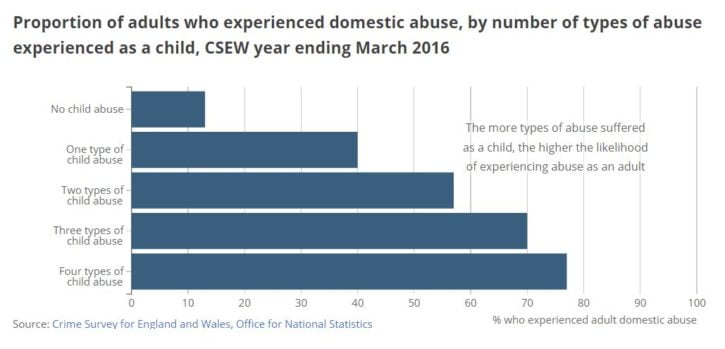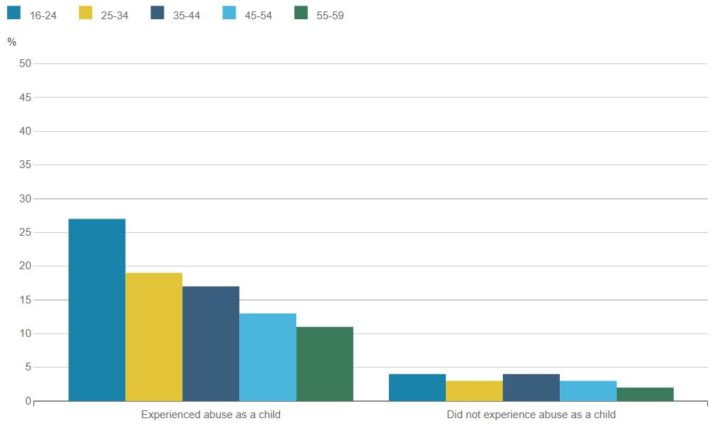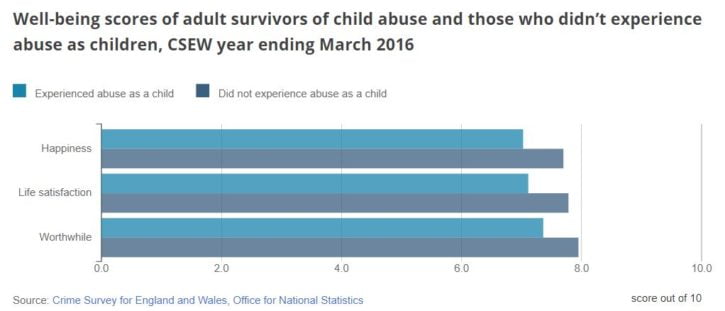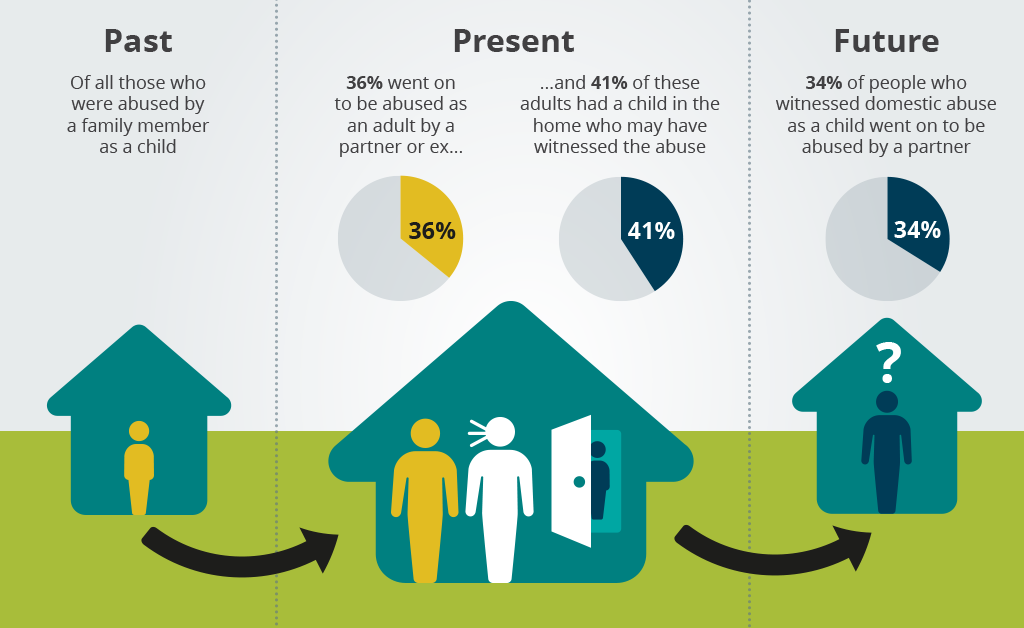The links between child abuse and later domestic abuse
More than half (51%) of adults who were abused as children experienced domestic abuse in later life, new analysis published by the Office of National Statistics has revealed. The scale and extent of the lifelong impact of child abuse, while not surprising, is still distressing to read.
Domestic abuse includes sexual assault, non-sexual abuse and stalking by a partner or family member. The CSEW defines domestic abuse as occurring after the age of 16.
Child abuse includes psychological and physical abuse, sexual assault, and witnessing domestic abuse. A child is defined by the CSEW as a person under the age of 16.
Around one in five adults aged 16 to 59 (an estimated 6.2 million people) had experienced some form of abuse as a child, according to the Crime Survey for England and Wales (CSEW) for the year ending March 2016.
But the impact of what is often a hidden crime does not always end there.
A higher proportion of survivors of child abuse went on to experience domestic abuse in adulthood, compared with those who suffered no childhood abuse.
Survivors of child abuse or not and whether they experienced domestic abuse as an adult

Survivors of multiple types of child abuse more likely to experience domestic abuse in later life
Those who survived more than one type of child abuse were more likely to experience domestic abuse as an adult than those who survived fewer types of child abuse, the analysis found.
Survivors of all four types of child abuse were the most likely to suffer domestic abuse; 77% had experienced domestic abuse after the age of 16, compared with 40%3 who experienced one type of abuse as a child.

More than a third of those abused by a family member as a child were abused by a partner in adulthood
More than one in three (36%) of those who experienced abuse by a family member as a child were abused by a partner as an adult. The data also show that adults who witnessed domestic abuse as a child in their home were more likely to experience abuse by a partner as an adult (34% compared with 11% who did not witness domestic abuse).
Sexual assault as an adult
Almost a third (31%) of adults who were abused as a child reported also being sexually assaulted as an adult, compared with 7% of those who did not experience abuse as a child.

Women survivors of child abuse more likely than men to experience abuse as an adult
Women who were survivors of childhood abuse were four times more likely to experience sexual assault after the age of 16 than male survivors (43% compared with 11%). More than half (57%) of women who were survivors of child abuse experienced domestic abuse as an adult, compared with 41% of men.
Overall, women were five times more likely to suffer sexual assault as an adult than men (20% compared with 4%), and twice as likely to experience domestic abuse (26% compared with 14%).
Domestic abuse in the last year
Roughly one in six adults who were abused as a child had experienced domestic abuse in the previous year. Young adults (aged between 16 and 24) who were abused during childhood were most likely to have experienced domestic abuse in the previous year.
Proportion of adults who experienced domestic abuse in the last year, by experience of abuse as a child

Adult survivors of child abuse and levels of health and well-being
The analysis shows that adult survivors of childhood abuse were more likely to have taken illegal drugs in the last year than those who had not experienced abuse as a child (12% compared with 8%).
They were also almost twice as likely to report having a long-standing illness or disability compared with those who were not abused as a child (28% compared with 15%).
At the same time, 78% of child abuse survivors said their health, in general, was “very good” or “good”, compared with 87% of those who did not experience abuse as a child.
Survivors of childhood abuse rated their well-being as lower than adults who did not experience abuse as a child. They were less likely to be happy, satisfied with life and feel their lives were worthwhile than those who were not abused as children.
Well-being scores of adult survivors of child abuse

Blog posts in the Criminal Justice category are kindly sponsored by Get the Data which provides Social Impact Analytics to enable organisations to demonstrate their impact on society. GtD has no editorial influence on the contents of this site.









